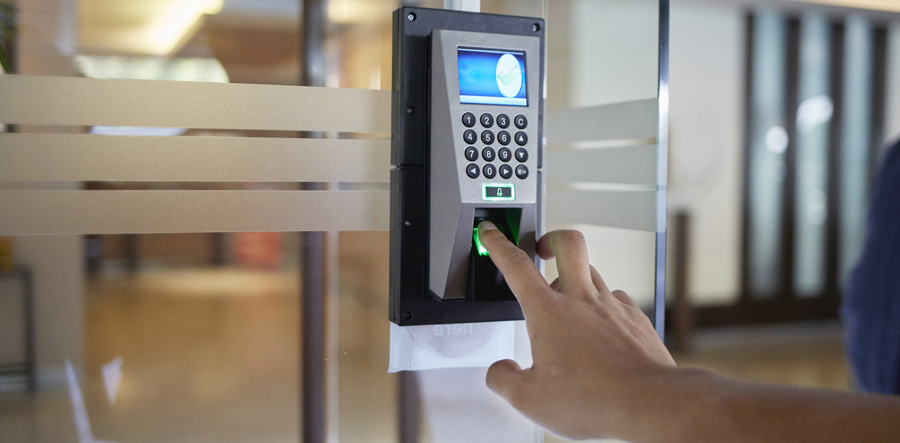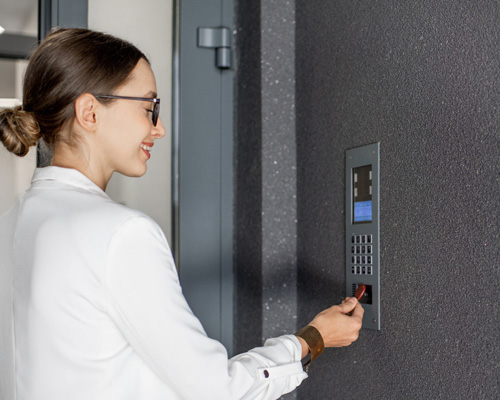ACCESS CONTROL SYSTEMS



Biometric Attendance & Access Control
With Enbaar's biometric solutions, you can bid farewell to outdated access control methods and time theft concerns. Our system leverages unique biological traits such as fingerprints, facial features, or iris patterns to provide foolproof identification, eliminating the risk of unauthorized access or buddy punching. Stay ahead of security threats with our real-time monitoring capabilities, enabling you to promptly address any anomalies and maintain the integrity of your premises. Our scalable and flexible solutions cater to businesses of all sizes, delivering seamless integration and maximum productivity.
Multiple identity authentication methods such as RFID access cards, pin codes, face recognition, fingerprints, or smartphones.

- Attendance Data
Generate customized data on a daily/ weekly/ monthly basis, export to multiple formats, integrate it with your payroll systems, and much more.

Ensures the highest level of protection to your premise by restricting and controlling access to who comes in and goes out of the secured premises,
- Fingerprint Recognition
Fingerprint recognition systems authenticate individuals based on their unique fingerprint patterns. These systems are highly accurate and widely used in various industries for access control and attendance tracking.
- Facial Recognition Systems
Facial recognition systems use advanced algorithms to analyze and authenticate facial features of individuals. With high-speed processing, these systems offer rapid and contactless identification, ideal for enhancing security in diverse environments.
- Iris Recognition Systems
Iris recognition systems utilize the distinct patterns of the iris to verify the identity of individuals. Known for their exceptional accuracy, these systems are suitable for high-security applications where stringent access control measures are essential.
- Voice Recognition Systems
Voice recognition systems authenticate individuals based on their unique vocal characteristics. By analyzing speech patterns and voiceprints, these systems offer convenient and reliable access control solutions, particularly in environments where hands-free operation is preferred.
- Access Control Card Readers
Access control card readers utilize proximity cards, smart cards, or key fobs to grant or deny access to individuals. These systems offer flexibility and ease of use, allowing organizations to manage access permissions efficiently.
- Biometric Access Control Panels
Biometric access control panels integrate biometric authentication methods such as fingerprint or facial recognition with traditional access control systems. These panels offer enhanced security by combining multiple layers of verification, making them ideal for safeguarding sensitive areas.
- Keypad Access Control Systems
Keypad access control systems require users to input a numeric code or PIN to gain entry. These systems are cost-effective and versatile, offering a straightforward solution for controlling access to buildings, rooms, or restricted areas.
- Mobile Access Control Solutions
Mobile access control solutions leverage smartphones or other mobile devices as authentication credentials. By utilizing Bluetooth or NFC technology, these systems offer convenience and flexibility, allowing users to access authorized areas using their mobile devices.
FAQ's
Biometric attendance and access control utilize unique biological traits such as fingerprints, iris patterns, or facial features to accurately identify individuals. These systems work by capturing biometric data during enrollment, storing it securely, and then comparing it with live biometric samples during authentication to grant access or record attendance.
ZKTeco, eSSL, and Biomax are commonly used for biometric attendance systems due to their reliable and user-friendly devices.
Common biometric modalities used in attendance and access control systems include fingerprint recognition, facial recognition, iris recognition, palm vein recognition, and voice recognition.
Biometric systems are highly accurate, with error rates significantly lower than traditional identification methods like PINs or access cards. The accuracy varies depending on the specific modality used and the quality of the biometric samples captured during enrollment.
Yes, biometric systems are often designed to be compatible with existing security infrastructure, allowing for seamless integration with access control systems, time and attendance software, and other security protocols within an organization.
Biometric data collected by these systems is encrypted and stored securely to prevent unauthorized access. Additionally, reputable biometric systems adhere to industry standards for data protection and implement measures such as multi-factor authentication and regular security audits.
Yes, there are biometric systems specifically designed for outdoor and harsh environments, equipped with features like ruggedized hardware, weatherproof casing, and advanced sensors to ensure reliable performance in challenging conditions.
Biometric attendance and access control systems streamline workforce management by accurately tracking employee attendance, reducing administrative overhead, and preventing unauthorized access. They also enhance security by eliminating the risk of credential sharing or theft.
Installation and setup requirements vary depending on the specific system and environment. Generally, it involves mounting biometric readers in strategic locations, connecting them to the network, enrolling users into the system, and configuring software settings to meet the organization’s needs.
Common issues with biometric systems may include sensor malfunctions, connectivity problems, or software glitches. Troubleshooting steps typically involve checking hardware connections, rebooting devices, updating software, and consulting user manuals or technical support resources for further assistance.




